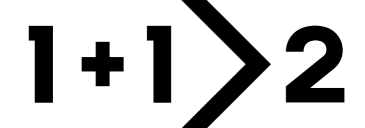Founder
HOANG THUC HAO
Hoang Thuc Hao’s commitment to vernacular architecture in rural communities : He describes his gilding philosophy as “Happiness architecture 1+1>2”, an equation combining architecture and core vernacular values to generate a common voice greater than the sum of its parts. His commitment to ameliorating the daily lives of Vietnamese people living in poverty in highland and rural areas of Viet Nam while respecting both local traditional cultures and the natural environment.
EDUCATIONAL QUALIFICATIONS
- National University of Civil Engineering | 1987 - 1992
- Polytechnic University of Turin - Italy | 2000 - 2003
PROFESSIONAL EXPERIENCE
- National University of Civil Engineering | Lecturer in Faculty of Architecture and Urban Planning 2003 - Present | Specialized in Sustainable Architecture.
- National University of Civil Engineering | President of Architecture Union 2015 - present.
- Vietnam Association of Architects (VAA) | Vice President | 2010 - Current.
- Vietnam Green Architecture Council | Member of Executive Board | 2010 - Current.
- Vietnam Youth Union | Member of Executive Board | 1995 - 2019.
- 1+ 1 > 2 International Architecture Office| Founder - Chief Architect | 2003 - Current.
- Anti-Flood Program | Member | 2014 | Currently promoting for the establishment of Anti-Flood Fund - Green Community Fund - 200 Houses have been built since the middle of 2013.
- “Schools for Impoverished children in rural area” program | Chief Architect | 2014 - Current | Responsible for designing and constructing schools in Vietnam’s Northern mountainous area.
- Private Fund for Community Architecture | Founder | 2015 - Current.
- Lecture at Art Institute of Chicago, National University of Singapore, TU Delft (Netherlands), Guangzhou Academy of Fine Arts, Polytechnic University of Puerto Rico, Quebec University (Canada).
- Jury Member of World Architecture Festival | Berlin - 2016, 2017, and 2023.
- ARCH+ Exhibition and Talk show about Community Architecture .
- Presentation at the WAF (World Architecture Festival) | Singapore, Berlin, Barcelona.
- Exhibition at Cornell University: 2023 WPreston H. Thomas Memorial. -Symposiu- FRINGE: New Centers of Architecture and Urbanism.
WORKS:
- Suoi Re Community House (Hoa Binh) | 2010
- Ta Phin Community House (Sa Pa, Lao Cai | 2013
- Chieng Yen Community House| 2015
- Nam Dam Homestay and Community House (Hà Giang)| 2015
- Cam Thanh Community House (Hoi An) | 2015
- Lung Luong Primary School (Thai Nguyen) | 2015
- Sentia School (Hanoi) | 2016
- Ban Ly School (Chieng Khoang) | 2019
- Happiness Center of Bhutan (Bhutan) | 2016
- Children’s Playground System | 2016
- Housing Program for Flooded Region | 2016
- Vertical village - Pixel (Hanoi) | 2016
- Vegetable Nursery System Made of Recycled Material | 2016
- Worker's Housing (Lao Cai) | 2016 - Hanging village (Hanoi) | 2016
- The country house (Dong Nai) | 2017
- Jackfruit Village (Hanoi) | 2018
- DAO School (Xuan Hoa) | 2018
- Da Hop School (Hoa Binh) | 2019
- School System in Moutainous and Remote Areas (52 School completed) | 2014 - 2021
- Bat Trang Pottery Museum (Hanoi) | 2020
- Dewey School (Hanoi) | 2020 - Vietnam Institute for Advanced Study in Mathematics (Hanoi) | 2020
AWARDS:
- Biennale SOFIA Award | 1994
- UIA Award (International Union of Architects) | 1996
- First Prize of DAAD, Vietnam - Germany Science and Technology Center | 1996
- The highest Prize of UIA Barbara Cappochin Award | 2011
- Winner World Architecture Festival Award (WAF). Community Category | 2015
- Vietnamese Architect of the Year| 2015 - Gold Prize of Vietnam Green Architecture| 2016
- SIA-Getz Architecture Prize 2016 for Emergent Architecture in Asia| 2016
- 4 Architecture Master Prizes (AMP)| 2018 - 2020
- Gold winner in category Resort Buildings Arcasia Award for Architecture | 2020
- 07 Spec Go Green Awards| 2014 - 2018 - 16 National Architecture Awards | 2006 - 2023
- 12 Green Good Design Awards | 2011 - 2021
- 06 Vietnam Green Architecture Awards | 2013 - 2021
- 05 Futurarc Green Leadership Awards | 2011 - 2020
- 07 Arcasia Architecture Awards - AAA | 2011 - 2021
- 07 The International Architecture Awards IAA Chicago | 2011 - 2021
- Winner of The Vassilis Sgoutas Prize for Implemented Architecture Serving the Impoverished| UIA Triennalrizes 2017
- Winner of The Robert Matthew Prize for Sustainable and Humane Environments | UIA Triennal Prizes 2023
HOANG THUC HAO
Hoang Thuc Hao’s commitment to vernacular architecture in rural communities : He describes his gilding philosophy as “Happiness architecture 1+1>2”, an equation combining architecture and core vernacular values to generate a common voice greater than the sum of its parts. His commitment to ameliorating the daily lives of Vietnamese people living in poverty in highland and rural areas of Viet Nam while respecting both local traditional cultures and the natural environment.
EDUCATIONAL QUALIFICATIONS
- National University of Civil Engineering | 1987 - 1992
- Polytechnic University of Turin - Italy | 2000 - 2003
PROFESSIONAL EXPERIENCE
- National University of Civil Engineering | Lecturer in Faculty of Architecture and Urban Planning 2003 - Present | Specialized in Sustainable Architecture.
- National University of Civil Engineering | President of Architecture Union 2015 - present.
- Vietnam Association of Architects (VAA) | Vice President | 2010 - Current.
- Vietnam Green Architecture Council | Member of Executive Board | 2010 - Current.
- Vietnam Youth Union | Member of Executive Board | 1995 - 2019.
- 1+ 1 > 2 International Architecture Office| Founder - Chief Architect | 2003 - Current.
- Anti-Flood Program | Member | 2014 | Currently promoting for the establishment of Anti-Flood Fund - Green Community Fund - 200 Houses have been built since the middle of 2013.
- “Schools for Impoverished children in rural area” program | Chief Architect | 2014 - Current | Responsible for designing and constructing schools in Vietnam’s Northern mountainous area.
- Private Fund for Community Architecture | Founder | 2015 - Current.
- Lecture at Art Institute of Chicago, National University of Singapore, TU Delft (Netherlands), Guangzhou Academy of Fine Arts, Polytechnic University of Puerto Rico, Quebec University (Canada).
- Jury Member of World Architecture Festival | Berlin - 2016, 2017, and 2023.
- ARCH+ Exhibition and Talk show about Community Architecture .
- Presentation at the WAF (World Architecture Festival) | Singapore, Berlin, Barcelona.
- Exhibition at Cornell University: 2023 WPreston H. Thomas Memorial. -Symposiu- FRINGE: New Centers of Architecture and Urbanism.
WORKS:
- Suoi Re Community House (Hoa Binh) | 2010
- Ta Phin Community House (Sa Pa, Lao Cai | 2013
- Chieng Yen Community House| 2015
- Nam Dam Homestay and Community House (Hà Giang)| 2015
- Cam Thanh Community House (Hoi An) | 2015
- Lung Luong Primary School (Thai Nguyen) | 2015
- Sentia School (Hanoi) | 2016
- Ban Ly School (Chieng Khoang) | 2019
- Happiness Center of Bhutan (Bhutan) | 2016
- Children’s Playground System | 2016
- Housing Program for Flooded Region | 2016
- Vertical village - Pixel (Hanoi) | 2016
- Vegetable Nursery System Made of Recycled Material | 2016
- Worker's Housing (Lao Cai) | 2016 - Hanging village (Hanoi) | 2016
- The country house (Dong Nai) | 2017
- Jackfruit Village (Hanoi) | 2018
- DAO School (Xuan Hoa) | 2018
- Da Hop School (Hoa Binh) | 2019
- School System in Moutainous and Remote Areas (52 School completed) | 2014 - 2021
- Bat Trang Pottery Museum (Hanoi) | 2020
- Dewey School (Hanoi) | 2020 - Vietnam Institute for Advanced Study in Mathematics (Hanoi) | 2020
AWARDS:
- Biennale SOFIA Award | 1994
- UIA Award (International Union of Architects) | 1996
- First Prize of DAAD, Vietnam - Germany Science and Technology Center | 1996
- The highest Prize of UIA Barbara Cappochin Award | 2011
- Winner World Architecture Festival Award (WAF). Community Category | 2015
- Vietnamese Architect of the Year| 2015 - Gold Prize of Vietnam Green Architecture| 2016
- SIA-Getz Architecture Prize 2016 for Emergent Architecture in Asia| 2016
- 4 Architecture Master Prizes (AMP)| 2018 - 2020
- Gold winner in category Resort Buildings Arcasia Award for Architecture | 2020
- 07 Spec Go Green Awards| 2014 - 2018 - 16 National Architecture Awards | 2006 - 2023
- 12 Green Good Design Awards | 2011 - 2021
- 06 Vietnam Green Architecture Awards | 2013 - 2021
- 05 Futurarc Green Leadership Awards | 2011 - 2020
- 07 Arcasia Architecture Awards - AAA | 2011 - 2021
- 07 The International Architecture Awards IAA Chicago | 2011 - 2021
- Winner of The Vassilis Sgoutas Prize for Implemented Architecture Serving the Impoverished| UIA Triennalrizes 2017
- Winner of The Robert Matthew Prize for Sustainable and Humane Environments | UIA Triennal Prizes 2023


























